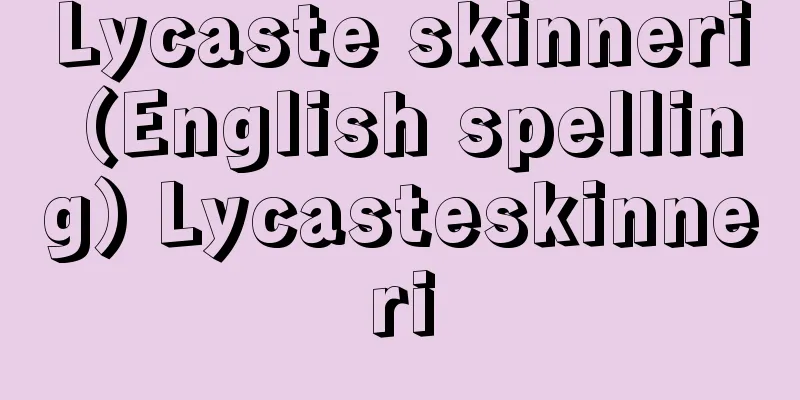Hokekyoji Temple

|
This is a Nichiren sect temple in Nakayama, Ichikawa City, Chiba Prefecture. It is called Shochuzan. The principal image is the Great Mandala. It is one of the five major head temples of the Nichiren sect. It is the largest head temple in the Kanto region, along with Honmonji Temple in Ikegami, Tokyo. When Nichiren passed away in 1282 (5th year of the Koan era), Tokijonin, who served Chiba Yoritane, the guardian of Shimousa Province, made his own residence into a temple, called Hokkeji Temple, and became a monk, changing his name to Nichijo, and became the first chief priest. Hidaka, the second chief priest, founded Honmyoji Temple on the site of Ota Jomyo's mansion in Nakayama, and while living there, he also served as the chief priest of Hokkeji Temple. The system of Honmyo and Hokkesan as a single temple began at this time, but it seems that the two temples were not united to become Hokekyoji until around 1545 (Tenbun 14). After the third head priest Nichiyu, the temple developed with the support of the clan of the powerful Chiba Tanesada. The statue of Kishimojin, said to have been made by Nichiren, is worshiped as the guardian deity of child rearing. The temple's collection includes one volume of Rissho Ankokuron (The Treatise on the Peace of the Land) written by Nichiren, one volume of Kanjin Honzon Sho (The Honzon of the Contemplation of the True Spirit), and a box with Kasugayama lacquerware, which are national treasures. The 56 volumes of Nichiren Shonin's handwritten writings, the five-story pagoda, the Hokke-do Hall, the Shisokumon Gate, and the silk-painted 16 Arhat statues in the Soshido Hall are all important national cultural properties. [Tamura Kosuke] Source: Shogakukan Encyclopedia Nipponica About Encyclopedia Nipponica Information | Legend |
|
千葉県市川市中山にある日蓮(にちれん)宗の寺。正中山(しょうちゅうざん)と号する。本尊は大曼荼羅(だいまんだら)。日蓮宗五大本山の一つ。東京都池上(いけがみ)の本門寺と並んで関東の大本山である。下総(しもうさ)国守護千葉頼胤(よりたね)に仕える富木常忍(ときじょうにん)が、1282年(弘安5)日蓮が入滅すると自邸を寺として法華(ほっけ)寺と称し、自ら出家して名を日常(にちじょう)と改め、初代貫首(かんじゅ)となった。第2代貫首となった日高(にちこう)は中山にある太田乗明(じょうみょう)の館(やかた)跡に本妙寺を創建し、ここに住みながら法華寺の貫首を兼ねた。本妙・法華両山一主制はこのときに始まるが、両寺が一寺となって法華経寺となるのは1545年(天文14)のころらしい。第3代貫首日祐(にちゆう)以降、豪族千葉胤貞(たねさだ)の一族の外護(げご)に支えられて発展。日蓮作と伝えられる鬼子母神(きしもじん)像は子育ての守護神として信仰を集めている。所蔵の日蓮真筆『立正安国論(りっしょうあんこくろん)』1巻、『観心本尊抄(かんじんほんぞんしょう)』1巻、春日山蒔絵(かすがやままきえ)箱は国宝。日蓮上人(しょうにん)自筆遺文(いぶん)56巻、五重塔、法華堂、四足門(しそくもん)、祖師堂絹本着色十六羅漢像は国重要文化財。 [田村晃祐] 出典 小学館 日本大百科全書(ニッポニカ)日本大百科全書(ニッポニカ)について 情報 | 凡例 |
Recommend
Student Support Association
A foundation established for the purpose of provid...
Antibiotics
…In 1944, streptomycin was discovered, which was ...
Ikariin - Ikariin
…Inyoukaku is made from the dried stems and leave...
Itochu General Partnership Company
…Tadabei then expanded into Osaka and Kyoto, open...
Yachimata [city] - Yachimata
A city in northern Chiba Prefecture. It was incorp...
Toi [town] - Toi
An old town in the northwest of the Izu Peninsula,...
Open Work
...Cutout embroidery. A type of openwork (a techn...
The Painter of Moulins - Maître de Moulins
Date of birth and death unknown. French painter. ...
Dangerous Liaisons (film)
...Born in Cannes in the south of France, he beca...
Gynura bicolor - Gynura bicolor
A perennial plant of the Asteraceae family, native...
QRST Wave - QRST
…Each wave is given the universal name P or QRST....
Mount Kobushigatake
Also known as Mt. Kobushin. A mountain in the Chi...
New Year's calligraphy - Kakizome
It is also called "Kisho" or "Hats...
Foreign Books - Ikokusousho
A series of 13 books mainly about Japan in the Azu...
Stradella, A. (English spelling) StradellaA
… [Music format and main composers] As mentioned ...









